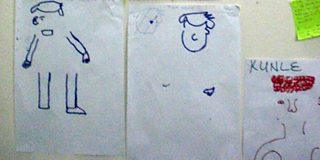Training tips: how to inform and inspire journalists
Ehizogie Ohiani
Producer/Trainer, �������� Media Action in Nigeria
Tagged with:
Journalists the world over aren't exactly known for their lack of cynicism. And in Nigeria it's often extremely hard to break through a journalist's hardened shell with training that convinces them they can address corruption, help people become aware of their rights and make a difference.
But as a trainer for �������� Media Action in Nigeria, I know it's possible - and the results can be remarkable.
Here are my practical tips on creating training sessions for radio journalists that can inform and inspire:
1. Make sure you do your own research first
Before you do anything, it's vital to pinpoint your trainees' gaps in knowledge and the areas where they need help - otherwise how else will you know where to start?
This can be done in a variety of ways. Before our training sessions, we ask all our trainees to fill in forms identifying their needs and interests, and to send us their programmes so we can listen to them for ourselves.
We also make a point to simply tune in to listen to our trainees on air – often without their knowledge! That way, we can hear them as they naturally broadcast and identify the areas where they need guidance.
2. Keep it all interactive – and fun
It may sound obvious but sessions that don't get trainees to actively take part are all too common – and will never have great results.
What's more, interactivity isn't just about setting exercises for trainees to put into action what they've just learned. Interactive exercise can also help trainees identify the gaps in their knowledge themselves.
For example, at a recent training session, I came up with a fun way to test what is essential knowledge for a journalist who wants to effect change: in-depth understanding of citizens' rights.
I first asked the trainees to write down all the rights and responsibilities that they knew – and then score themselves by drawing a different body part of a cartoon person for every correct answer. So they drew an arm for writing down 'right to life', a leg for 'freedom of expression' and so on.

The exercise worked not only because it was good fun. It was also a non-confrontational way to get people to identify – and admit – where they didn't know as much as they thought they did.
It's also a method that I've used again and again too, adapting it to test trainees' knowledge of many other subjects.
3. Remember: everyone learns differently
It's obvious that as human beings, we're all very different – different personalities, upbringings, lifestyles and much more. But training can often not recognise this.
Remember that some people learn best through visual aids, some by listening, while others have to sketch, draw or take notes to make something really sink in.
For my session on citizens' rights, for example, I made sure that it used visual aids and the practical exercise mentioned above, as well as a presentation and group discussion to get everyone involved.
4. Feedback is essential
Always, always allot time during your sessions to ask for feedback.
Make sure you ask your trainees how useful the session has been to them and don't be afraid to dig for more responses - just in case they're just being polite! Ask them what they'll do differently because of the training, which practical thing was most useful, and what they’re going to do as soon as they get back to their desks.
Feedback will help you to stay inspired too. For example, one trainee in my citizen rights course was Maxwell Nashion from Fombina FM station in Yola, Adamawa state in northern Nigeria.
He told me, "Before the training, I used to think that I know my rights, but the training proved me wrong. After the practical exercise, I realised how ignorant I was in some aspects of human rights. The training has further broadened my knowledge on how to apply human rights in my reports so that my listeners and target audience can also know and apply their rights, when they want any of their problems to be solved."
5. Keep communicating
Don't ever think once the training finishes that the job's done! Always try to keep in contact with your trainees so you can measure the impact of all your hard work.
I made sure to keep in touch with Maxwell, for example, and he told me how, after the training, he decided to focus on rights and responsibilities of citizens in the interior villages of his state.
One of his reports focused on a village called Bille in Adamawa state, where villagers were only able to source drinking water from two dirty streams behind the village where they also washed themselves and their clothes.
The villagers had never thought about demanding basic rights, like clean water, from the government.

But after Maxwell's report on Bille community, things actually started to change.
"The report received a positive response," he told me, "The councillor representing the area started mobilising the local government authorities to drill a borehole in the area." Maxwell is following up to ensure the authorities keep to their promise.
Such a positive change may not happen because of every report a journalist makes.
But it can all start with a memorable, useful and inspiring training session.
Related links
Follow �������� Media Action on and
